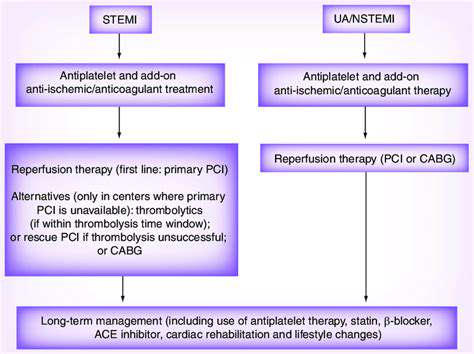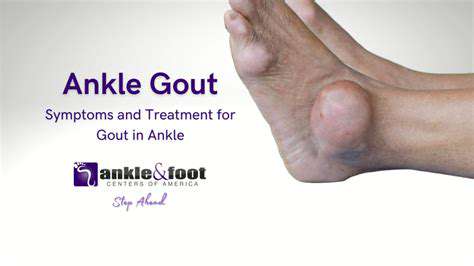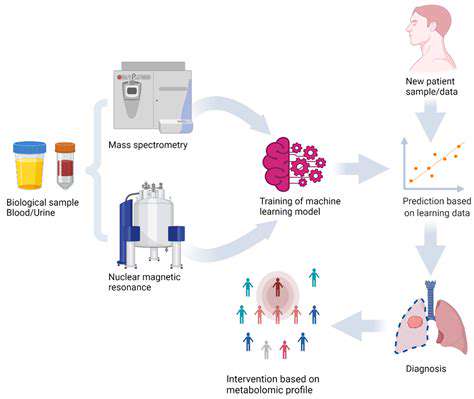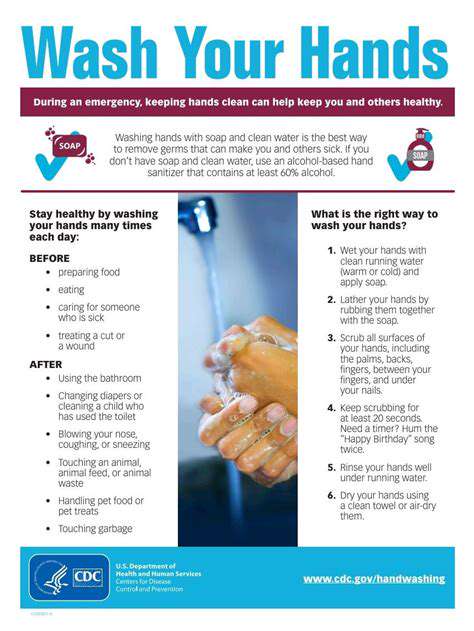Hand Safety Tips for Industrial Workers
Choosing the Right Protective Gear
Choosing the Right Gloves
Selecting appropriate gloves is crucial for hand safety in industrial settings. Different materials offer varying levels of protection against cuts, abrasions, chemicals, and heat. For instance, leather gloves provide excellent abrasion resistance, while nitrile gloves excel at chemical resistance. Understanding the specific hazards present in your work environment is paramount to selecting the correct glove type. Consider factors like the types of materials handled, potential temperatures, and the risk of sharp objects or projectiles.
Always ensure the gloves fit properly and comfortably. Gloves that are too tight can restrict blood flow and increase the risk of injury. Gloves that are too loose can easily slip off during work, also posing a hazard. Properly fitting gloves allow for better dexterity and control, enhancing overall work performance and safety.
Protecting Against Cuts and Punctures
Industrial environments often expose workers to sharp objects, making cut and puncture protection essential. Using gloves alone may not be enough, so consider specialized hand protection such as cut-resistant sleeves, or reinforced gauntlets. These specialized coverings are designed to provide an extra layer of defense against sharp objects and prevent deep cuts or punctures. Understanding the potential for these types of injuries and implementing appropriate protective gear is critical for maintaining safe working conditions.
Shielding Hands from Chemicals and Hazards
Many industrial processes involve exposure to hazardous chemicals, solvents, and other potentially harmful substances. Choosing chemical-resistant gloves is paramount to preventing skin absorption and associated health risks. The type of chemical and its concentration will determine the necessary level of protection. Always consult safety data sheets (SDS) for specific recommendations regarding the appropriate protective gear for each chemical encountered. Selecting appropriate protective gear based on the chemical exposure is vital to preventing long-term health problems.
Beyond chemical exposure, consider other hazards like extreme temperatures or corrosive substances. Specialized gloves, such as those made from heat-resistant materials, are necessary for working with high temperatures. Similarly, gloves that resist corrosive agents are crucial when handling such substances. The specific characteristics of the hazard will dictate the required level and type of protection needed.
Ensuring Proper Fit and Maintenance
A critical aspect of hand protection is ensuring the proper fit of the chosen gear. Gloves that are too tight or too loose can compromise dexterity and increase the risk of injury. It is essential to select gloves that fit comfortably and allow for a full range of motion. Regular inspections and maintenance of protective gear are also vital. Inspect gloves for any damage or deterioration before each use. Damaged gloves should be replaced immediately to maintain their protective capabilities.
Proper hand hygiene after using protective gear is also important. This helps in preventing the spread of contaminants and maintaining the overall health of the worker. Following proper cleaning and storage procedures for protective gear will help ensure their longevity and effectiveness. This is essential in maintaining a safe work environment.
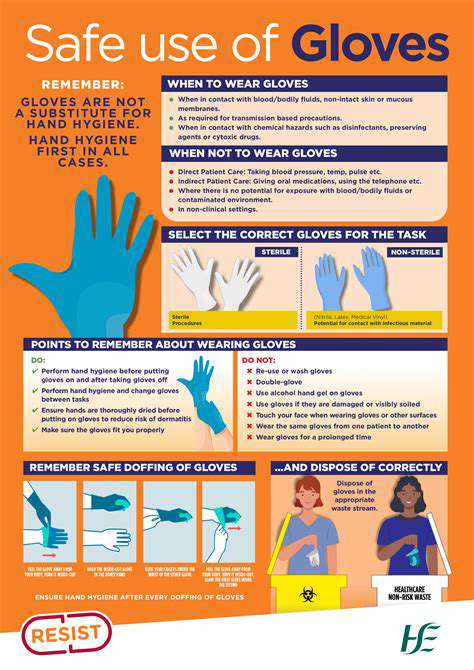
Implementing Safe Work Practices and Procedures
Understanding the Importance of Hand Safety
Protecting your hands is crucial in industrial environments. Injuries to the hands can lead to significant pain, prolonged recovery periods, and even long-term disability. Implementing safe work practices and procedures is not just a matter of following regulations; it's about prioritizing the well-being and productivity of your workforce. Preventing hand injuries ultimately contributes to a safer and more efficient work environment for everyone.
Identifying Potential Hand Hazards
Thoroughly assess your workspace for potential hazards. This includes evaluating the types of machinery, tools, and chemicals used. Sharp edges, moving parts, and corrosive substances are just some examples of potential dangers. Regular inspections and risk assessments are vital to proactively identify and mitigate these hazards, preventing accidents before they occur.
Careful attention should be paid to the condition of equipment and tools. Damaged or malfunctioning machinery can lead to unexpected movements, posing a serious risk to hand safety. A comprehensive approach to hazard identification includes the input of workers, who are often the most familiar with the daily tasks and potential pitfalls.
Proper Hand Tool Selection and Usage
Choosing the right tools for the job is paramount. Using the correct hand tools, specifically designed for the task, minimizes the risk of injury. For instance, using the wrong tool can increase the force required to complete a task, leading to strain and potential hand injuries. Proper training on the correct techniques for using each tool is equally important. This includes understanding the limitations of the tools and the potential hazards associated with misuse.
Personal Protective Equipment (PPE)
Using appropriate Personal Protective Equipment (PPE) is a cornerstone of hand safety. This includes wearing gloves that are specifically designed for the task and the materials being handled. Gloves should provide adequate protection against cuts, abrasions, and chemicals. Regularly inspecting gloves for damage or wear and tear is essential to maintain their protective capabilities. Choosing the correct type of glove for the specific task ensures adequate protection.
Safe Handling and Storage of Materials
Proper handling and storage of materials are critical. Heavy objects should be lifted with proper techniques, using your legs and not your back or hands. Handling slippery or unstable materials requires extra caution to prevent slips, trips, and falls, which can result in hand injuries. Ensuring proper storage prevents items from falling or creating tripping hazards. Understanding the weight and characteristics of materials is essential for safe handling.
Training and Education
Comprehensive training programs are essential for all workers. This includes training on safe lifting techniques, proper tool usage, and the correct procedures for handling various materials. Regular safety meetings and demonstrations can reinforce these crucial skills and knowledge. Hands-on training sessions allow workers to practice and solidify their understanding of safe work procedures. Consistent reinforcement of these practices is vital for maintaining a strong safety culture.
Emergency Procedures and First Aid
Having established emergency procedures in place is vital. Knowing what to do in the event of a hand injury or accident can significantly impact the outcome. This includes knowing how to use the appropriate first aid procedures for different types of injuries, where to obtain medical assistance quickly, and who to contact in an emergency. A well-defined emergency plan minimizes the severity of incidents and ensures a smooth response in case of an accident.
Promoting a Culture of Hand Safety
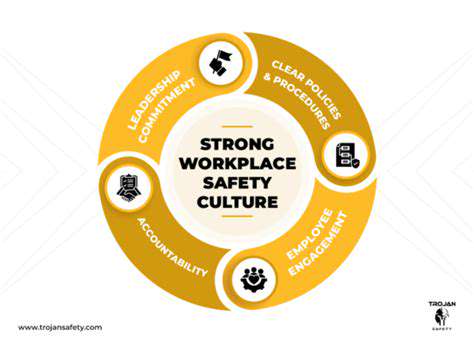
Understanding the Importance of Hand Protection
Protecting hands is crucial for maintaining a healthy and productive workforce. Injuries to the hands can result in significant long-term disability, impacting not only the individual but also the entire organization. Preventive measures, such as proper hand safety protocols and the use of appropriate protective gear, are essential investments in employee well-being and overall operational efficiency. Hand injuries often lead to lost time, medical expenses, and decreased productivity.
Implementing a culture of hand safety fosters a proactive approach to preventing accidents. This involves education, training, and reinforcement of safety procedures at every level of the organization.
Identifying Potential Hazards
Thorough hazard identification is the cornerstone of a strong hand safety program. This includes recognizing potential sources of hand injuries, such as sharp objects, moving machinery, chemical exposure, and repetitive motions. Identifying these hazards allows for the implementation of targeted safety measures to mitigate risks.
Regular inspections of the workplace are critical for identifying and correcting any potential hazards before they lead to an accident. This proactive approach significantly reduces the likelihood of hand injuries and ensures a safer work environment.
Providing Proper Training and Education
Comprehensive training on hand safety procedures is paramount. Training programs should cover the proper use of hand protection equipment, such as gloves, and explain the specific hazards associated with various tasks and materials. This education should equip employees with the knowledge and skills to protect themselves.
Encouraging the Use of Personal Protective Equipment (PPE)
Providing high-quality and appropriate personal protective equipment (PPE) is a fundamental element of a strong hand safety program. This includes a wide range of gloves designed to protect against various hazards, such as cuts, punctures, chemicals, and extreme temperatures. PPE should be readily available and easily accessible to all employees.
Regularly inspecting and maintaining PPE is essential to ensure its effectiveness and safety. Providing proper training on the correct use and maintenance of PPE will help employees understand its importance and value.
Establishing Clear Safety Policies and Procedures
Developing and implementing clear safety policies and procedures is crucial for guiding employee behavior and promoting a culture of safety. These policies should outline expectations for hand safety, providing specific instructions for handling hazardous materials and operating machinery. Clear communication of these procedures ensures that all employees understand the necessary steps to protect themselves and others.
Promoting a Culture of Reporting and Accountability
Creating an environment where employees feel comfortable reporting near misses and minor injuries is vital for continuous improvement. This open communication fosters a culture of accountability and allows for the identification and correction of potential hazards before they escalate. Encouraging employees to report incidents is critical to improving safety standards and preventing future accidents. The organization should have a system in place to address these reports promptly and efficiently.
Regularly Evaluating and Improving the Program
Regular evaluation and improvement of the hand safety program are essential for maintaining its effectiveness. This includes tracking injury rates, analyzing incident reports, and identifying areas for improvement in safety procedures and training. Regular updates to the program will ensure that it remains relevant and effective in preventing hand injuries. Feedback from employees and safety professionals should be considered in the evaluation process to ensure the program is well-suited to the needs of the workforce.
Read more about Hand Safety Tips for Industrial Workers
Hot Recommendations
- The Impact of the Digital Age on Hand Function
- The Role of Hands in Agricultural Innovation
- The Impact of Technology on Hand Artistry
- The Importance of Hand Care for Artists
- How Hand Control Enhances Robotic Surgery
- The Impact of Hand Strength on Physical Labor
- How Handwriting Influences Cognitive Development
- The Impact of Environmental Factors on Hand Health
- The Power of Hands in Building Community
- The Importance of Ergonomics in Hand Health
